Xu Haiyun, China Urban Construction Institute: development prospect of domestic waste incineration power generation under the background of carbon emission reduction
Article guide
On April 19, 2021, the China Environmental Alliance 2021 (the eighth) solid waste recycling Summit Forum, sponsored by the China strategic emerging industries Environmental Protection Alliance, was held in Shanghai. At the forum, Xu Haiyun, chief engineer of China Urban Construction Research Institute Co., Ltd., delivered a keynote speech entitled "development prospect of domestic waste incineration power generation under the background of carbon emission reduction". In view of how to effectively reduce carbon emission, chief engineer Xu Haiyun pointed out the general trend of waste incineration by comparing different treatment and disposal methods of domestic waste. Not only large cities are planning to build waste incineration plants, but also to build beautiful China. The garbage in villages and towns needs to be moderately concentrated and solved through modern incineration, It is proposed that "power generation by incineration of domestic waste can become a negative carbon technology through CCS technology".
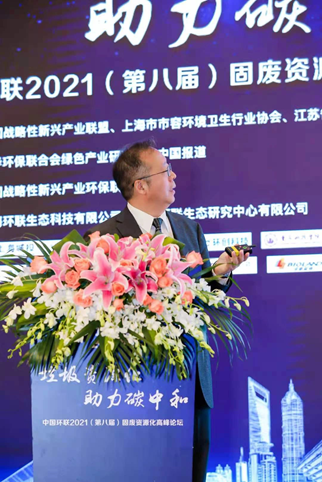
Xu Haiyun, chief engineer of China Urban Construction Research Institute Co. Ltd
1. Greenhouse gas emissions in the field of domestic waste treatment
On September 22, 2020, General Secretary Xi Jinping solemnly announced at the general debate of the 75th session of the United Nations General Assembly that "China will enhance its national independent contribution, adopt more effective policies and measures, strive to reach its peak by 2030, and strive to achieve carbon neutrality by 2060."
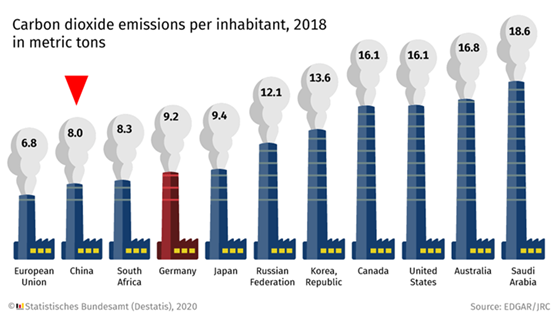
According to the U.S. Environmental Protection Agency, methane emissions account for about 17% of global greenhouse gases, and domestic waste emissions account for 3-5% of global greenhouse gases. Methane is the main contributor, Reduce methane emission and improve recovery and utilization level is the main way.
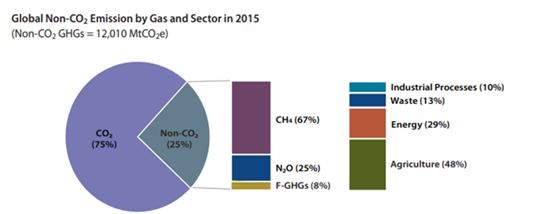
Types and influencing factors of greenhouse gases emitted from waste treatment process (100 years)
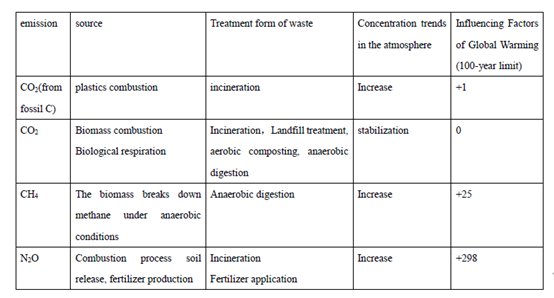
Current situation of greenhouse gas emission in waste field in OECD countries
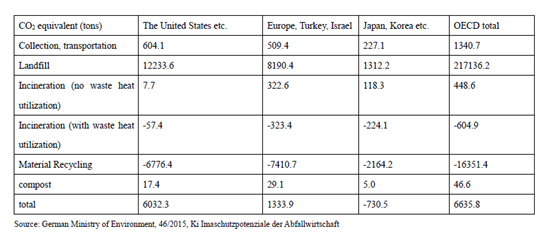
 Denmark
Denmark
From January 1, 1997, the landfill of combustible waste was prohibited, and the methane emission of landfill site reached the peak around 2002.
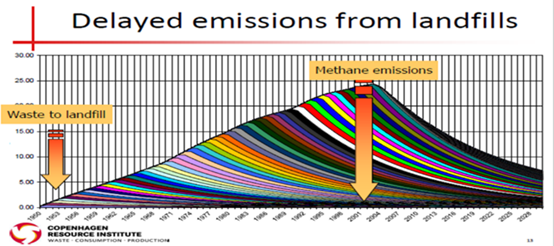
Germany
In 1993, the greenhouse gas reached its peak in the field of solid waste.
According to the latest data released by the German Ministry of environment, in 1990, Germany's greenhouse gas emissions were 1.25 billion tons, of which 37-40 million tons were from solid waste, accounting for 3%. Landfill is the main source of greenhouse gas emissions in the field of solid waste, and the contribution rate of methane emission from landfill site accounts for 93%. In 2019, the total emission of greenhouse gases in Germany is about 810 million tons, of which 1.1% is from solid waste. Germany's greenhouse gas emissions have decreased by 440 million tons in the past 30 years, of which the contribution of solid waste is about 29 million tons, accounting for 6.5%. The main measures are incineration instead of landfill to reduce methane emissions.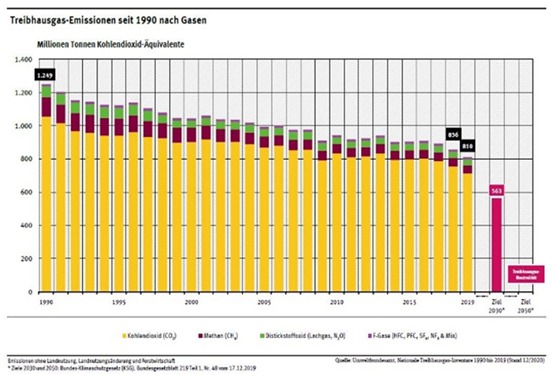
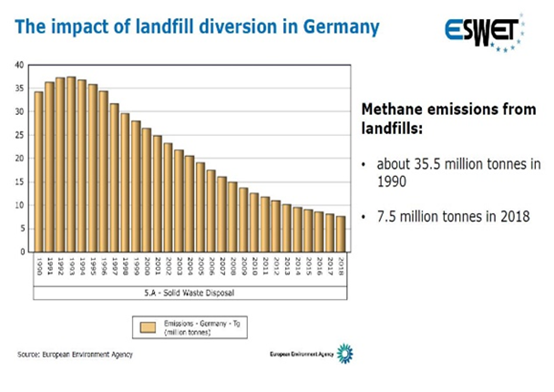
China
After the landfill volume of general domestic waste landfill site decreased significantly, after deducting the collection and utilization of landfill gas and torch combustion, the total emission of methane into the environment began to decline. The amount of domestic waste landfill in China began to decline in 2017, and the amount of incineration exceeded the amount of landfill in 2019, The methane emission of landfill will reach the peak around 2022.
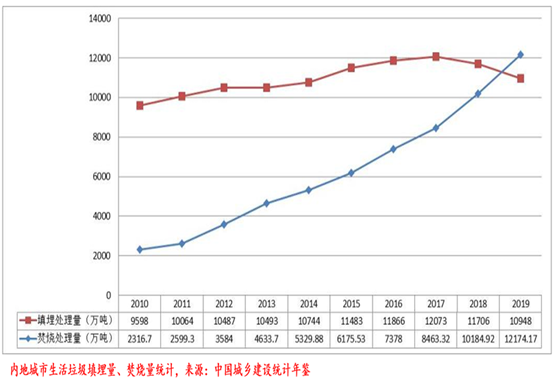
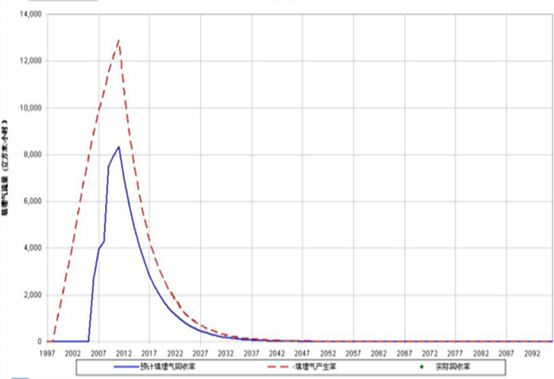
2. How can we effectively reduce emissions
In view of how to effectively reduce carbon emission, chief engineer Xu Haiyun put forward his own opinions by comparing different treatment methods of domestic waste, and pointed out the general trend of waste incineration.
Treatment and disposal method | viewpoint | Basis of data |
Recyclable material recovery | By recycling high-value recyclables, such as metal, waste paper, etc., the carbon reduction effect is significant, glass, plastic science is poor. | The International Solid Waste Association's White Paper on Solid Waste Treatment and Climate Change (2009) cites data from the Bio study: the contribution of recycling to carbon emissions is 0.6-2.5 tons/ton of paper, 10 tons/ton of aluminum, 2 tons/ton of steel scrap, 0.5 tons/ton of glass, and 0-1.0 tons/ton of plastic. |
Sanitary landfill | Domestic waste incineration replaces burial to reduce methane emissions. | According to the characteristics of domestic waste in China, the amount of methane produced by each ton of domestic waste in landfills is about 50kg (equivalent to 150m of landfill gas). If 20% is recycled, that is, 1 ton of landfill waste is equivalent to 1 ton of CO2 emission. |
Composting treatment and anaerobic digestion | Taking methane leakage into account (the average methane escape rate at an anaerobic digestion facility is 5% according to the German charging system), there is no reduction in biomass waste anaerobic effect. | According to the International Solid Waste Association's White Paper on Solid Waste Treatment and Climate Change (2009), the contribution of organic composting to carbon emissions is approximately 60kgCO2 per ton of organic waste. The following aspects should be considered for the carbon emission in the anaerobic digestion of organic waste: its own energy consumption, methane leakage in the treatment process, nitrogen oxide emission, fertilizer application and methane energy utilization. According to statistics from the German state of Batschuttenburg, the average anaerobic gas production of biomass waste is 100m3/ ton, more than half of which is used for its own consumption. However, the anaerobic gas production of domestic kitchen waste is about 70m3/ ton, which is often unable to offset its own energy consumption. |
Waste incineration | Not only the impact of reducing landfill gas, but also the impact of recycling metals, etc. | The United States Environmental Protection Agency (EPA): domestic waste incineration of biomass power generation contribution of 60%, incineration of 1 ton of domestic waste equivalent to a reduction of non-1 ton of CO2,34 states defined as renewable energy. According to the European waste incineration equipment association report released recently, European life burning garbage incinerator years nearly 100 million tons, from incineration slag recycled aluminum 250000 tons, 1.2 million tons of ferrous metals, copper and even gold, more than 3 kg of gold, can be made for each of 650 europeans a gold ring. Waste incineration in Europe recyses 550 million euros worth of metal a year, equivalent to 3.8 million tons of carbon dioxide emissions. Based on the amount of domestic waste incinerated, Switzerland recovered 1.33 kg of metal per ton of garbage in 2010, and 4.83 kg of metal per ton of garbage in 2018. (Source: VBSA,2019), Professor Rainer Bunger from Switzerland conducted a study on the separate collection of metals in Swiss household household garbage, showing that less than 1/4 of the total amount of metals collected and recycled through household classification in Switzerland, while more than 3/4 of metals were recovered from the slag of domestic garbage incineration plant. The cost of recycling metals from domestic waste incinerators is negligible compared with the high cost of collecting them at source, from SFr100 per tonne for iron and SFr1,500 per tonne for aluminium tanks |
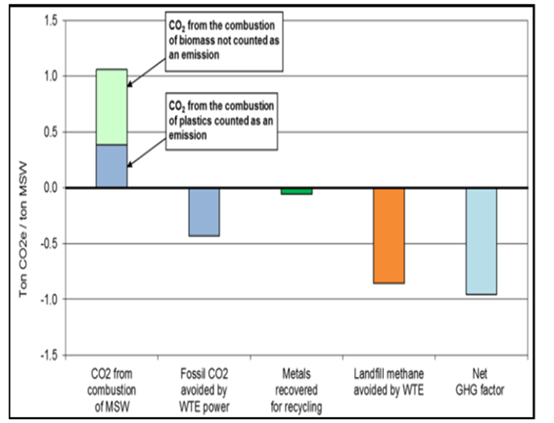
3. Development prospect of domestic waste incineration for power generation
Domestic and domestic waste incineration power generation related policy documents in recent years
The release date | Release theme | File | Content related to waste incineration |
2017.12.12 | The National Development and Reform Commission | Notice on Further Improving the Planning and Site Selection of Domestic Waste Incineration Power Plants | The circular required all localities to speed up the preparation of medium - and long-term special plans for household waste incineration power generation. The special plan must be compiled separately and shall not be compiled jointly with other biomass power generation plans. The deadline for the special plan is 2030. |
2020.7.31 | The National Development and Reform Commission, the Ministry of Housing and Urban-Rural Development and the Ministry of Ecology and Environment | Implementation Plan for Strong and Weak Strengthens of Urban Household Waste Classification and Treatment Facilities | We will comprehensively promote capacity building for incineration treatment. In areas with a daily garbage collection volume of more than 300 tons, the development of incineration-oriented garbage treatment methods should be accelerated, and incineration treatment facilities should be built appropriately in advance to meet the domestic garbage collection volume. By 2023, zero landfill of untreated garbage should be basically achieved. Encourage the coordinated construction of incineration treatment facilities across regions. We will explore pilot projects for small household waste incineration facilities in areas where daily household waste collection volume is less than 300 tons. In areas where there are no regulations on waste classification, and in areas where the recycling products of kitchen waste lack access to consumption, kitchen waste can be integrated into the existing incineration facilities for overall treatment. |
2020.11.27 | 12 ministries and commissions, including the Ministry of Housing and Urban-Rural Development | Notice on Several Opinions on Further Promoting the Work of Household Waste Classification | We will strengthen research and development, integrated demonstration and application of technologies and equipment for the classification and treatment of household waste, focus on solving problems such as small-scale incineration treatment, incineration fly ash treatment, leachate treatment and kitchen waste treatment, and build a whole-process technical support system for household waste from source to end and from production to consumption. |
2019.7.10 | The Ministry of Finance | Reply to Recommendation No. 8443 of the Second Session of the 13th NPC | After careful study by the Ministry of Finance, the National Development and Reform Commission, the National Energy Administration and industry associations, on the one hand, we plan to continue the existing subsidy policy for the existing projects; On the other hand, considering the low efficiency and poor ecological benefits of waste incineration power generation projects, the proportion of new projects included in the scope of subsidies will be gradually reduced, and market-oriented support for waste incineration power generation industry will be guided through waste treatment fees and other means. |
2020.1.20 | Ministry of Finance, National Development and Reform Commission, National Energy Administration | Suggestions on Promoting the Healthy Development of Non-Water Renewable Energy Power Generation | We should adhere to the principle of determining expenditure based on revenue, and the scale of new subsidy projects should be determined by the income from new subsidies, so that new projects do not owe new ones. All eligible stock projects will be included in the subsidy list. |
2020.10.21 | Ministry of Finance, National Development and Reform Commission, National Energy Administration | Supplementary Notice on Several Opinions on the Promotion of the Healthy Development of Non-Water Renewable Energy Power Generation | Biomass power generation projects, including agricultural and forestry biomass power generation, waste incineration power generation and biogas power generation projects, have 82,500 hours of rational utilization in their whole life cycle. |
Combined with the latest national policies, Xu Haiyun, chief engineer of MSW incineration power generation, gave a unique interpretation.
1.There is considerable space for the development of domestic waste incineration.
2.The methane emission and the remaining problems of the landfill can be completely eliminated by digging out the old landfill site for screening treatment and burning the combustible materials.
3.The carbon emission benefits of metal recovery from slag after incineration will be more and more objectively understood.
4.Small waste incineration is not a technical problem, but a problem of scale economy.
5.For the scattered rural domestic waste which can not be landfilled, incinerated, it can be considered to pack for temporary storage.
6.The automatic monitoring data on the unified platform of the Ministry of ecology and environment is too idealistic, and the compliance rate can be said to be higher than that of almost all sewage discharge enterprises, which can not reflect the operation advantages and disadvantages; From the perspective of law enforcement punishment, the intensity of punishment for the same illegal situation in different provinces is not consistent. It is suggested to optimize law enforcement and pay attention to the range and accuracy of online monitoring data.
7.With the change of electricity price subsidy policy, the price subsidy is shortened to 11 years, and BOT agreement is generally 25-30 years. It can be suggested to learn from foreign experience that the collection and transportation fees should be collected by the local governments themselves, and the processing fees should be collected by the state through the electricity charges.
8.MSW incineration power generation can become a negative carbon technology through CCS (carbon capture and storage) technology.
